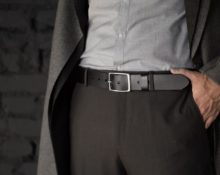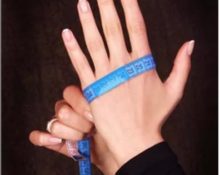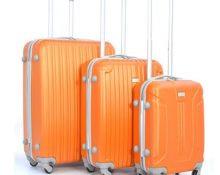Booties for babies from birth to one year are not just beautiful, but also necessary. For newborns, they should be made of soft, warm yarn or linen, depending on the season and air temperature. For example, in summer it is preferable to wear thin cotton products on a child. In cool times, when the temperature drops below 15°C, it is recommended to use woolen or half-woolen socks over cotton socks. After 10 months, children are already accustomed to shoes, as a result of which shoes are worn on flat soles made of artificial leather or genuine leather.
How to calculate the size of booties?
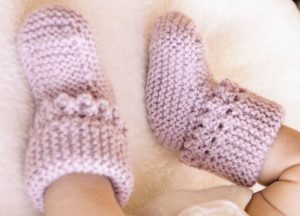 To purchase in a store, you should know their size chart. There are several standards: Russian, European, English and American. The easiest way to understand is Russian designations. They correspond to the length of the foot in centimeters.
To purchase in a store, you should know their size chart. There are several standards: Russian, European, English and American. The easiest way to understand is Russian designations. They correspond to the length of the foot in centimeters.
For example, shoe size 10, which is equivalent to foot measurements of 100 mm or 10 centimeters.Sometimes age (0–6 months) or letter (S, M, L) designations are used to determine the scale. It is also worth focusing on the metric system with integral numbers (20 cm is equivalent to size 20) or fractional (20.5 cm is equivalent to 20.5). The following classification is proposed by age categories:
- from 6 to 9 months. – size 17;
- from 9 to 12 months. – size 18–19;
- from 12 to 18 months. – size 19.
The maximum bootie size produced is 19.
It is much more difficult to understand European shoes, since the demimass (French) system is used here, which is based on the points. One of them is 2/3 cm.
With English sizes it’s not so simple either. For newborns, the count starts from zero, and then increments equal to 1/3 of an inch are added, that is, 8.5 mm. Let’s say that with a foot length of 8.9 cm, the US size corresponds to 1, and the UK size corresponds to 0.5.
Calculation of size - length and width
Recently, manufacturers can indicate on the packaging not only the size of the shoes, but also the length of the insole. How to take measurements from a child’s leg to find out the required size? It is better to carry out this procedure in the evening, since during the day the volume of the body increases slightly.
 First you need to put on a thin or thick sock, depending on what time of year the shoes will be purchased for.
First you need to put on a thin or thick sock, depending on what time of year the shoes will be purchased for.- Then take a sheet of paper, apply it to the sole and trace the outline of the foot.
- Using a ruler or measuring tape, measure the length from big toe to heel and the width along the most protruding lines.
Knitted products without soles are purchased exactly according to measured data. For hard soles, buy ½ cm more. Children's feet grow very quickly, so when ordering booties with long delivery times, you should take this into account.It is advisable to take measurements of both legs and take into account the larger result, which, in turn, is rounded up.
When purchasing shoes, the fullness of the foot and the height of the instep are additionally taken into account.. When purchasing for children aged one year and older, this should also not be forgotten.
Size chart by month
Manufacturers' sizing chart indicating the correspondence of foot length to age:

Letter designations:

An example of determining the size of booties
How to navigate the tables when purchasing? The proposed indicators correspond to the average statistical data. If a baby has a leg length of up to 11 cm and an age of up to six months, then booties must be bought in size S. Although, everything here is strictly individual, and it is better to first take measurements using the method described above, which is what you should focus on. This is especially true for boots with a thick base.
How to choose booties?
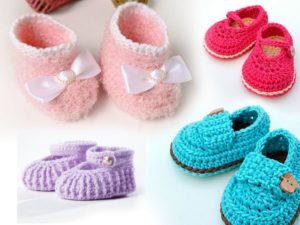 When choosing booties for the smallest ones, follow some rules. First of all they should be light and comfortable, fit tightly around the leg, not fall off, not twist, but at the same time not squeeze. The ties, seams and decorations are positioned so that the child does not experience discomfort in any position. When the baby begins to stand on his feet and try to walk, soft knitted ones or those made of fur, fleece, or knitwear should be replaced with breathable models with hard, non-slip soles. They are secured using wide elastic bands, cuffs, buttons, laces, and Velcro fasteners..
When choosing booties for the smallest ones, follow some rules. First of all they should be light and comfortable, fit tightly around the leg, not fall off, not twist, but at the same time not squeeze. The ties, seams and decorations are positioned so that the child does not experience discomfort in any position. When the baby begins to stand on his feet and try to walk, soft knitted ones or those made of fur, fleece, or knitwear should be replaced with breathable models with hard, non-slip soles. They are secured using wide elastic bands, cuffs, buttons, laces, and Velcro fasteners..
If during a walk your child wants to tramp through the snow under your guidance, insulated shoes made of water-repellent fabrics with rubber soles are sold for this case. There are even some on sale that, in addition to all their advantages, also have a massage effect.
It is advisable to try them on before purchasing. When purchasing booties in the absence of a child, for example as a gift, you need to at least approximately know the parameters of the foot and age. Not all kids favorably accept such a gift; some try to take it off, put it in their mouth, or simply throw it aside. Experts recommend first holding this strange item in your hands so that the capricious person gets to know the new item better and allows him to put it on himself.


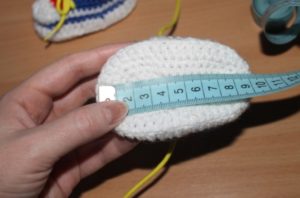 First you need to put on a thin or thick sock, depending on what time of year the shoes will be purchased for.
First you need to put on a thin or thick sock, depending on what time of year the shoes will be purchased for. 0
0